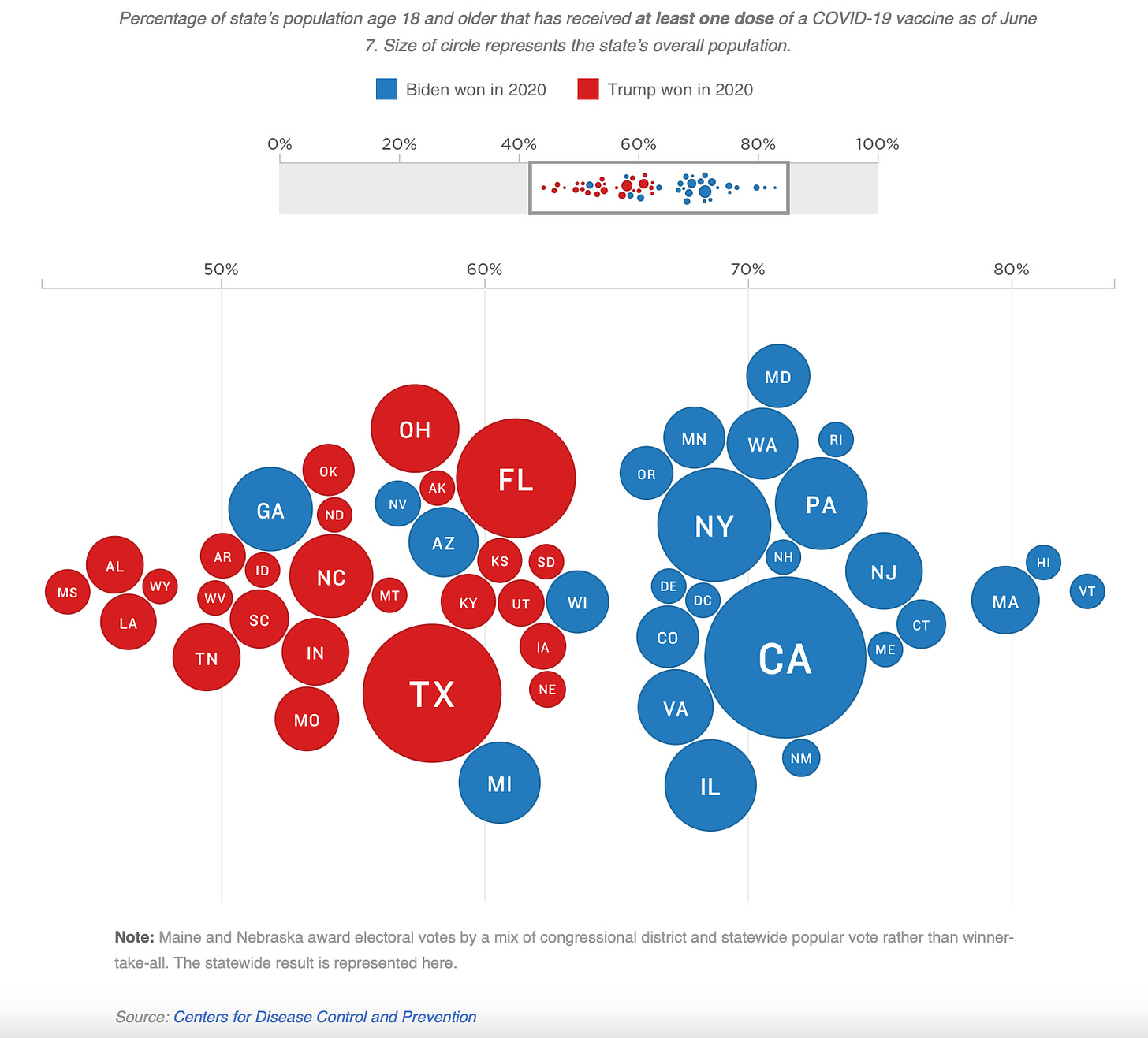Summertime & Delta Variant
July 18, 2021
“I SEE YOU!” That’s what I screamed from the bench as I watched my teammate drain a 3 pointer. He was on fire. His shooting was a bit off in the first half, but basketball shooting, like all things in life, tends to average out. He laughed as he jogged up the court back on D.
As any investor knows, if you’re deep into a thesis, life begin to revolve around the thesis. When you’re sitting on the bench, the mind tends to wander. That comment made me think about this chart because when you’re playing Sunday league basketball, of course you think about oil. This is implied oil product demand, year-over-year, in the US.
For most of 2021, we’re comparing against 2019 levels because to do otherwise would make you think the rebound in 2021 demand was much higher. So we’re comparing against a more “normal year” (i.e., 2019).
So you see? I SEE YOU. I SEE YOU moving and traveling, socializing and congregating. I see you consuming and shopping. The black line is YOY demand for gasoline, jet fuel and diesel, and the blue bars are for petrochemicals and propane. So things that move things and things that make things. Now we’ve shown this chart before but as the weeks have gone on, they’ve been increasing up and to the right.
We bring this up because what’s we’re doing is very very different than what we’re reading. Because what we’re reading is this.
Scary stuff. Our working theory on delta though is that: A) vaccines do work preventing or mitigating the severity of COVID, B) delta cases are occurring primarily among the unvaccinated, C) hospitalizations will stay low and manageable, and D) this too shall pass. If our theory is correct, then we’ll recover much faster than many investors anticipate. If not? What then?
What’s Acceptable
In a poll conducted by CBS News, unvaccinated Americans were the least concerned about the delta variant (48% not fully & unvaccinated vs. 72% fully vaccinated were worried). This makes sense, if unvaccinated Americans were not concerned about alpha, why would they worry more about another variant with a different roman name? Now much of this comes down to the politicization of the entire pandemic and the way we’ve handled the health debate. What’s clear at this stage is that the rate of vaccinations are falling along political lines (NPR).
Republican leaning states tend to have lower vaccination rates compared to Democrat leaning states. This isn’t surprising, but the question becomes if the delta variant edges higher in severity (i.e., hospitalizations) what’s the likelihood that local governments will impose greater restrictions?
We think it’s much lower this go-around given that free, highly effective, and easily attainable vaccines are now commercialized. In Republican leaning states, the populations there have always been against locking down, or at least imposing restrictions. The restrictions in general have been lighter and either voluntary or unenforced. If the delta variant increases in severity (though we continue to believe not anywhere near the levels of H1 2021), the chances of greater health care restrictions in those states (i.e., stay at home, essential personnel only, etc.) will still be low, and still lower than prior waves.
Even for Democrat leaning states, what’s the appetite for the higher vaccinated populace there to re-lock because those unwilling to get vaccinated are suffering? Governors and legislatures would then pit the economic well being of a majority of their citizens agains the health care outcomes of a minority group unwilling to get vaccinated. Possible, but for California, and it’s embattled Gov. Newsom (who’s fighting a recall election in September), it’s extremely unlikely unless the hospitalization numbers force his hands.
In both cases, politicians will be extremely hard pressed to put the genie back in the bottle once they issued the “all clear.” Effectively the Overton Window (i.e., the range of politically acceptable outcomes/discussions) has shifted on COVID with the vaccines. Red AND Blue states both have even more reasons not to restrict moblity.
For us, it comes down to this.
This is hospitalizations, while rising, they aren’t rising anywhere close to the prior peaks. If they begin to rapidly accelerate, then we may reassess our baseline assumptions. However, with mostly unvaccinated Americans and the younger cohorts becoming infected, it’s likely cases fall in short order, and hospitalizations stay low (those younger tend to have much better hospital outcomes).
Summertime
Nonetheless, despite the news, despite the concerns, we SEE YOU. Some of us say we’re concerned, but our actions are saying something different. We’re out and we’re about. We see your consumption and demand, and we see what you’re really thinking. For now, shots in, shades up, and top down. It’s summertime and like Will Smith sang in that song . . .
“Chillin in the car they spent all day waxing
Leanin to the side, but you can’t speed through,
Two miles an hour so everybody sees you . . . “
We do. We SEE YOU.





